How to attract owls to your yard – 3 pro ways to welcome these beautiful birds
Experts share their advice on encouraging more owls into your outdoor space
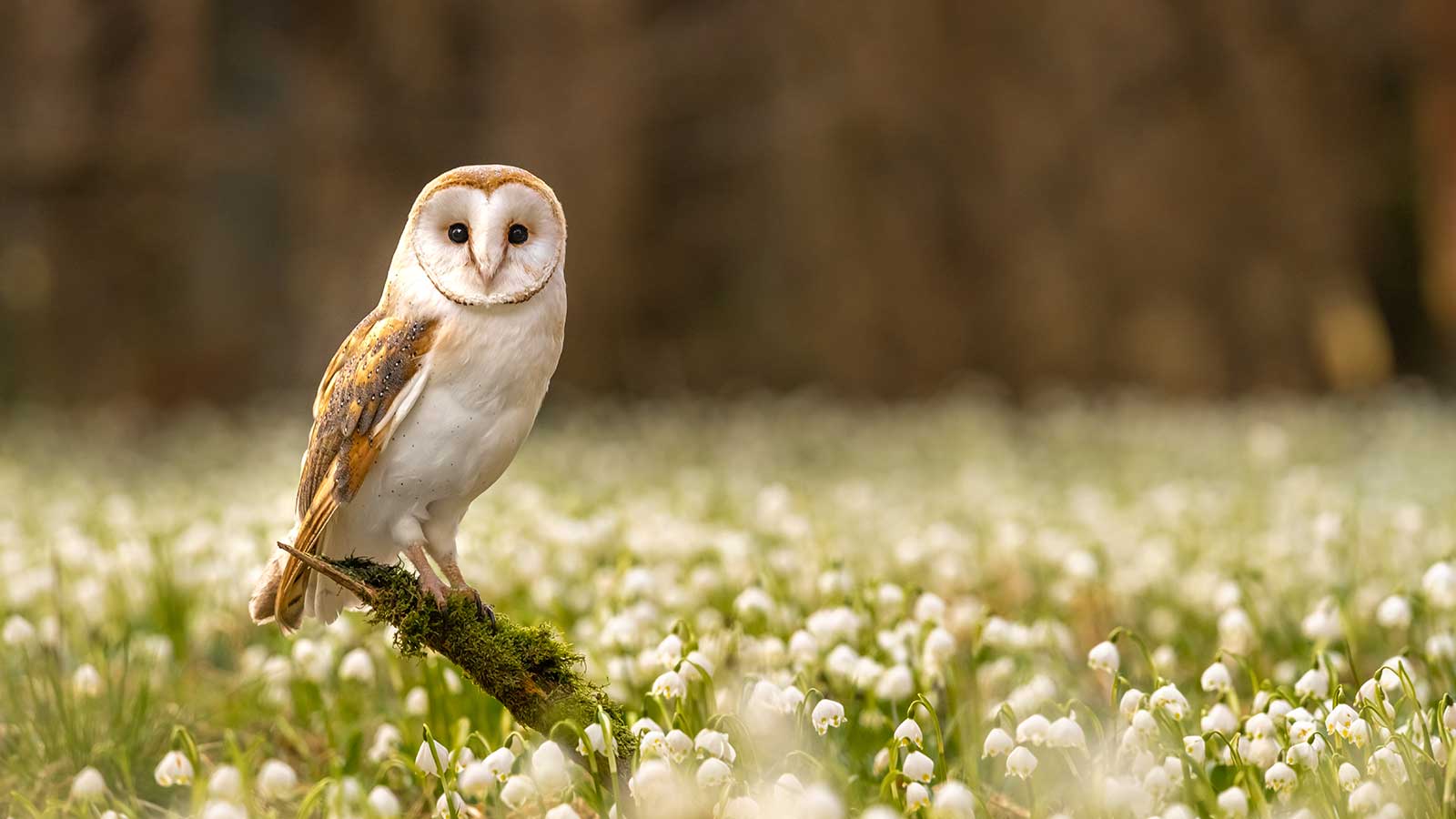

Spotting an owl in the wild is, for most, a rare treat. From the tiny elf owl to the majestic great gray owl, these wondrous creatures soar from tree to tree after dark, filling the night air with their gentle hoot.
There are multiple benefits to making your plot more wildlife-friendly for these birds. Firstly, they can help to reduce the number of insects and rodents living in your backyard, points out Ben Team, editor-in-chief of FootstepsInTheForest.com. This is ideal if you're dealing with a rat problem.
As well as this, providing owls with a safe place to live helps to support the overall ecosystem. 'These animals are under threat from habitat destruction, widespread pesticide application, and vehicular traffic (they're frequently hit by cars while capturing food), so they can use all the help we can offer,' says Ben.
Attracting owls to your yard can also help people feel better connected to the natural world, Ben adds. 'It can spur a lifelong love of nature in your children, who often thoroughly enjoy seeing and hearing owls in their backyards.'

Ben Team is editor-in-chief of FootstepsInTheForest.com. A lifelong environmental educator and the former executive director of a nature reserve, Ben has led more than 10,000 miles of guided nature hikes, authored more than 40 animal care books, and has been profiled in a variety of media outlets, including local public television, County Line Magazine, and Disney Radio.

The great horned owl is native to the Americas
How to attract owls to your outdoor space
Try these expert tips to attract these beautiful birds to your yard.
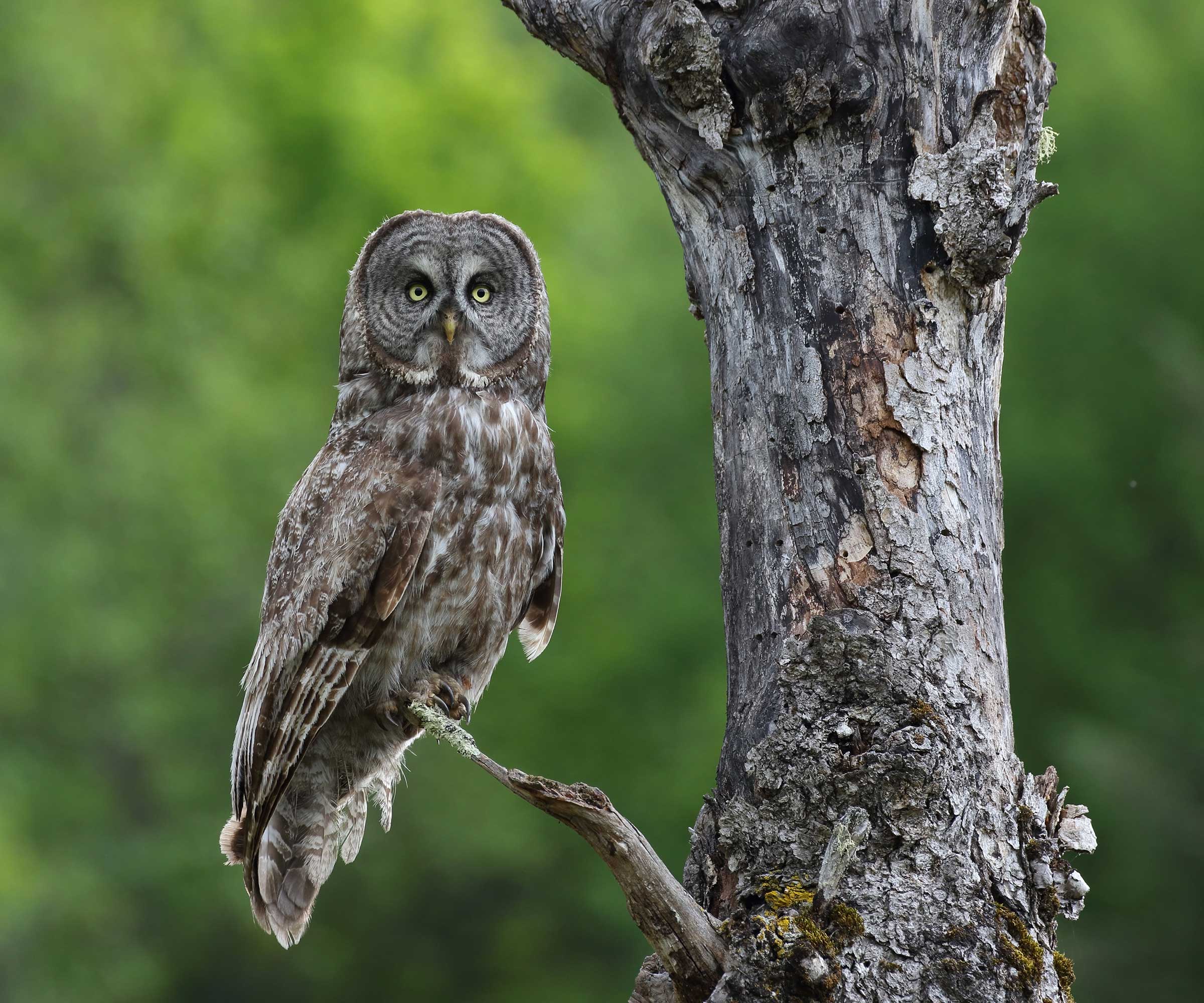
Great gray owls can have a wingspan of over five feet
1. Create a place for owls to shelter
'Historically, owls would nest in tree hollows, stolen hawk nests, large rock crevices, and similar places,' says Ben. 'But, owls will sometimes utilize nest boxes attached to backyard trees.'
He highlights that you'll need to select the proper size nest box for the owls in your area – and place it in a suitable position. The ideal location will vary from one species to the next, so homeowners will need to do a little research on the species in their region, he says. 'That said, you will generally want to place the box on a large tree, near a branch that allows the birds to enter and exit easily.'
The screech owl or saw-whet owl cedar nesting box from JCs Wildlife Store at Amazon is well-rated.
Having plenty of trees in your backyard and leaving dead snags – trees that have died and are decomposing naturally – can also help create desirable habitats for owls, says bird expert Maren Gimpel.

Maren Gimpel is Associate Director at Washington College’s Foreman’s Branch Bird Observatory at the Center for Environment and Society, where she bands birds for both migratory and breeding studies. A bander since 2002 and a birder for over 25 years, Maren is a North American Banding Council certified bird bander and trainer, and secretary of the Eastern Bird Banding Association. Before coming to Washington College, she worked on avian research projects, from migration banding in Nova Scotia to breeding biology of hummingbirds on the island of Tobago.
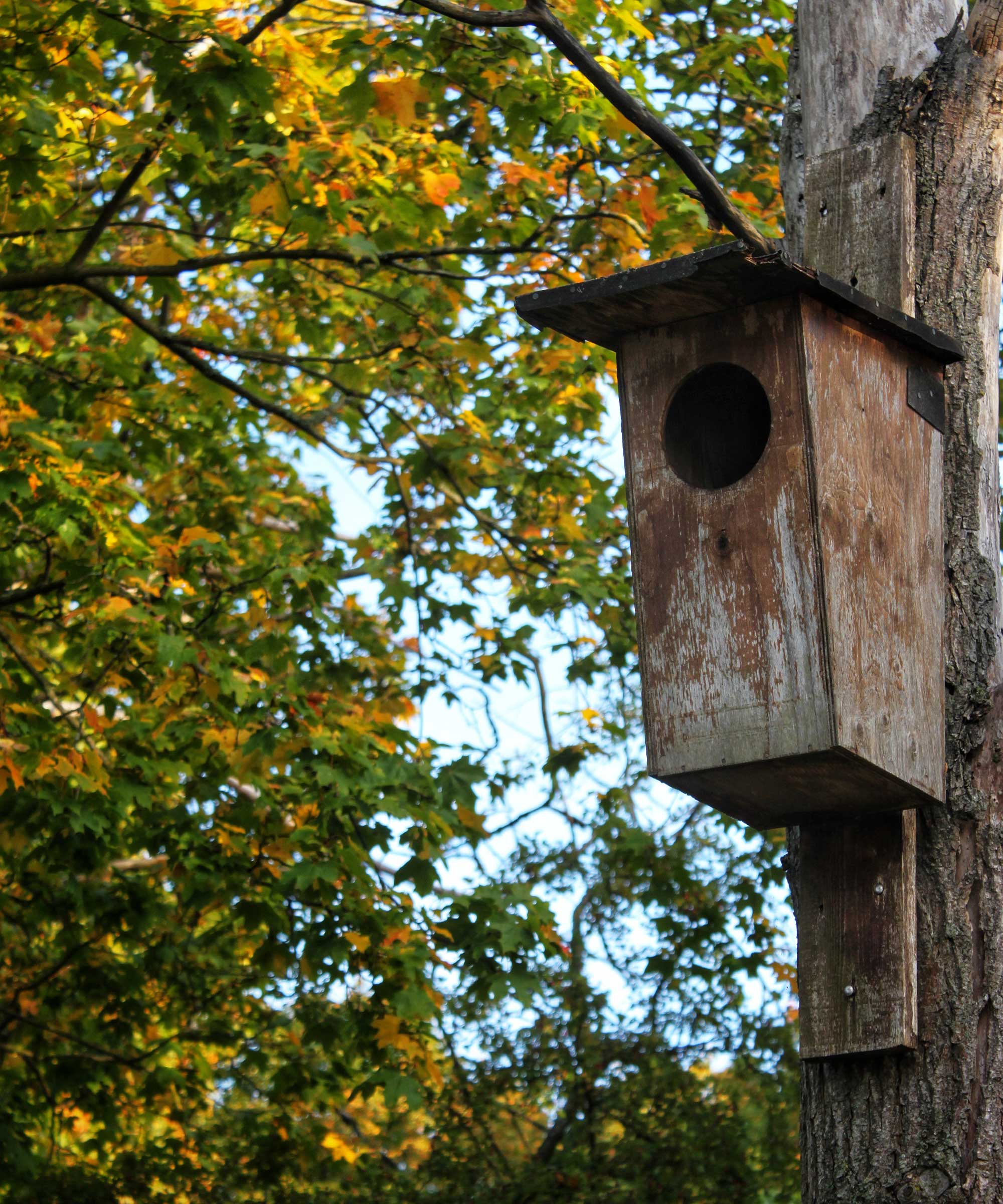
Owl nesting boxes can be installed in large trees
2. Reduce light pollution
Maren recommends turning off outdoor lights at night to help attract these fascinating feathered friends to your property.
Diana Ludwiczak, founder of BirdyBirdyBirdy.com, agrees. 'Owls prefer dark environments and bright lights can be disruptive to their natural behavior,' she says. If you still need some light for practical reasons, she suggests installing dimmer switches or motion-activated lights that are less likely to disturb them.

Diana Ludwiczak is the founder of BirdyBirdyBirdy.com, a website all about birds. She is also a licensed NY wildlife rehabilitator and a certified animal trainer. When training animals, she mainly focuses on scent-detection dogs and birds.
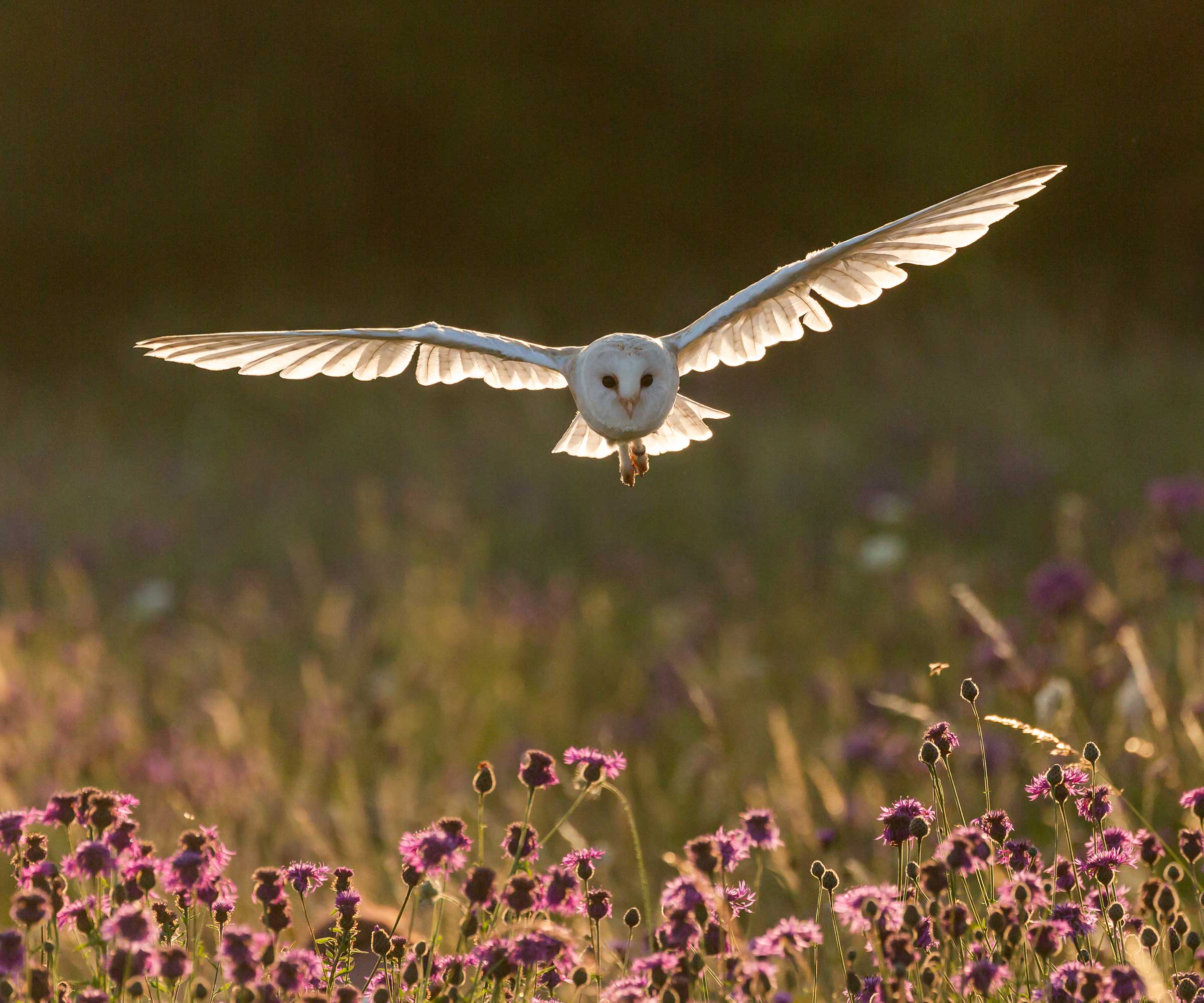
Most owls are nocturnal, but some will hunt at dusk, too
3. Consider their diet
'Owls are predators and their primary diet consists of rodents like mice and voles,' says Diana. These small creatures may already be present in your yard. However, you could also take steps to create a rodent-friendly environment by leaving brush piles, tall grasses, wood piles, and leaf litter, she says.
'If you do get visits from owls, please remember to avoid using all chemical rodenticides,' highlights Maren Gimpel. 'Owls that eat poisoned rats and mice will be poisoned themselves.'
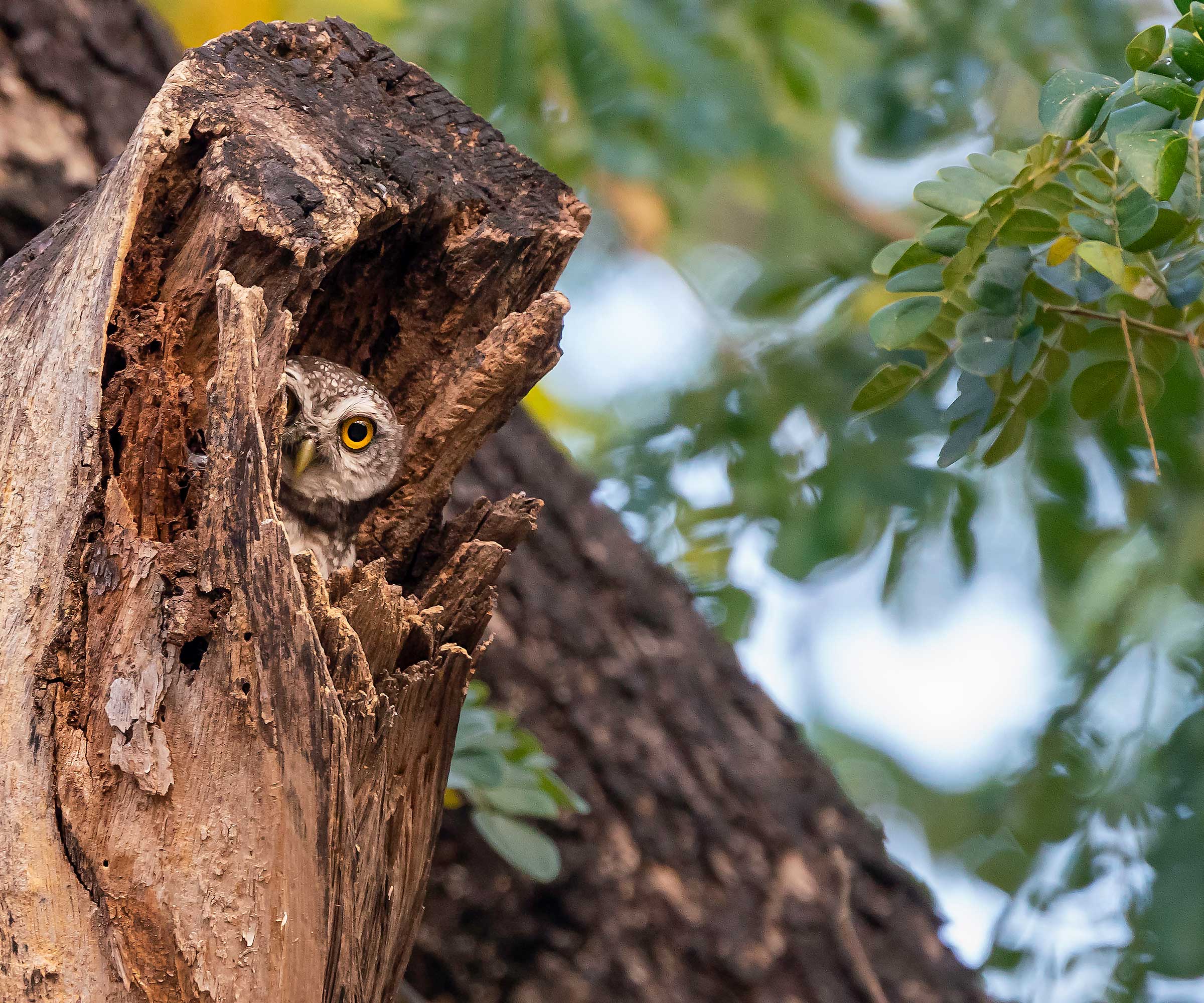
Avoid putting down rat poison in your yard, as this can harm the owls that feed on them
FAQs
How many types of owls are there in the US?
'Nineteen species of owls can be found in the United States and while some have very specific habitat requirements, many are found across much of the continent,' says bird expert Maren Gimpel.
Varieties include the great horned owl, which lives across North America. Its deep 'who who' call can be heard after dark in all kinds of woodlands and even deserts. 'In the eastern half of the country, barred owls can be heard asking "who cooks for you" across swamps and wetlands,' she says.
Screech owls and barn owls are some of the other species found in the US, and can be attracted by large nesting boxes, Maren adds. 'Those breeds are often used in agricultural settings like vineyards to help control rodent populations.'
Are owls dangerous?
Attacks from owls are rare. However, it's important not to get within close proximity to them in the wild, as they may become aggressive if they feel under threat.
Owls aren't the only natural visitors you can encourage into your yard. Why not fill your garden with plants for pollinators, add a water feature to attract dragonflies, or put up a hummingbird feeder, too?
Sign up to the Homes & Gardens newsletter
Design expertise in your inbox – from inspiring decorating ideas and beautiful celebrity homes to practical gardening advice and shopping round-ups.

Holly started writing about gardening five years ago, and she is a regular contributor to Homes & Gardens. She has also written many gardening features for Woman & Home and Real Homes, too. She has previous experience as a professional gardener, where she helped to plant and maintain private gardens. Holly has also looked after allotment plots over the years and loves to grow her own flowers and veggies from seed. In her spare time, she enjoys visiting local gardens, botanical drawing, and tending to her ever-growing collection of houseplants.
-
 Zooey Deschanel and Jonathan Scott's breakfast nook is an innovative, effective use of kitchen space – it turns a 'dead area' into a cafe-style corner
Zooey Deschanel and Jonathan Scott's breakfast nook is an innovative, effective use of kitchen space – it turns a 'dead area' into a cafe-style cornerJonathan and Zooey have situated an eccentric yet elegant dining area in what may have been an otherwise underused corner
By Hannah Ziegler Published
-
 6 things you should never throw in the trash – and what to do for safe disposal instead
6 things you should never throw in the trash – and what to do for safe disposal insteadFrom batteries to space heaters, experts reveal what not to throw
By Andy van Terheyden Published